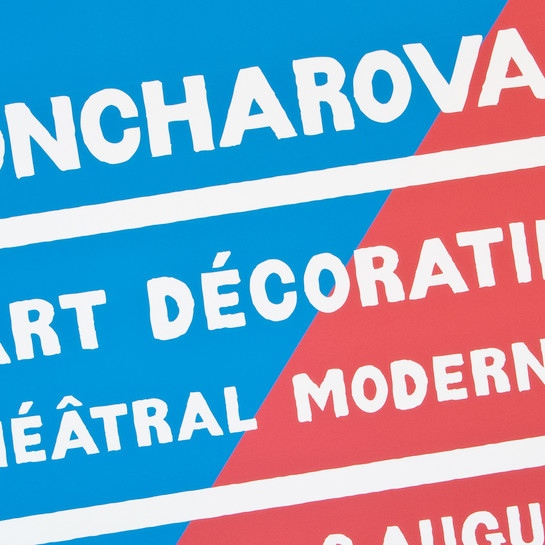Natalia Goncharova
Russia, b.1881, d.1962
Grime (Make-up) [Portrait of Diaghilev]
- 1919
- Pochoir stencil print
- Presented by Anita Muling, 1979
- 420 x 240mm
- 80/6
Tags: abstraction
Russian avant-garde painter Natalia Goncharova settled in Paris with her artistic partner Mikhail Larionov in 1918. The following year they produced L’Art Décoratif Théâtral Moderne (Modern Theatrical Decorative Art), the folio of sixteen lithographs and pochoir (stencil) prints from which these works came. Mainly featuring costume designs, it also celebrated their involvement with Serge Diaghilev’s Ballet Russes. Natalia was first drawn to the Spanish theme while with the ballet company in Spain in 1916, designing costumes for Rhapsodie Espagnole, a production that was never staged. Diaghilev is said to have been upset when told that Grime (Make-up) was his own wildly abstracted portrait.
(Perilous: Unheard Stories from the Collection, 6 August 2022- )
Exhibition History
This print is from the folio L’Art Décoratif Théâtral Moderne (Modern Theatrical Decorative Art) produced in Paris in 1919 by leading European avant-garde artists Natal’ya Goncharova (1881–1962) and Mikhail Larionov (1881–1964). Including examples of the artists’ work in lithography and pochoir (stencil) printing, the folio highlights not only their interest in stage and costume design, but also their desire to combine the forms of cubism with the representation of movement. In 1912 Larionov initiated rayonism, an artistic genre in which he investigated the effect of light rays fracturing and reflecting off the surface of objects. The prints included in L’Art Décoratif Théâtral Moderne, with their rich decorative patterns, vibrant colours and abstract forms, highlight these concerns.
Goncharova and Larionov first met in 1898 as students at the Moscow School of Painting, Sculpture and Architecture and remained lifelong companions. Both artists were founding members of leading Russian avant-garde movements, including the Donkey’s Tail (1912), and worked with the renowned founder of Ballets Russes, Serge Diaghilev (1872–1929), from 1914. In 1919 they relocated to Paris, where they became prominent figures in the city’s artistic, dance and literary circles. Today they are widely regarded as the foremost Russian artists of the twentieth century.
L’Art Décoratif Théâtral Moderne was presented to the Gallery by Anita Muling in 1979.
